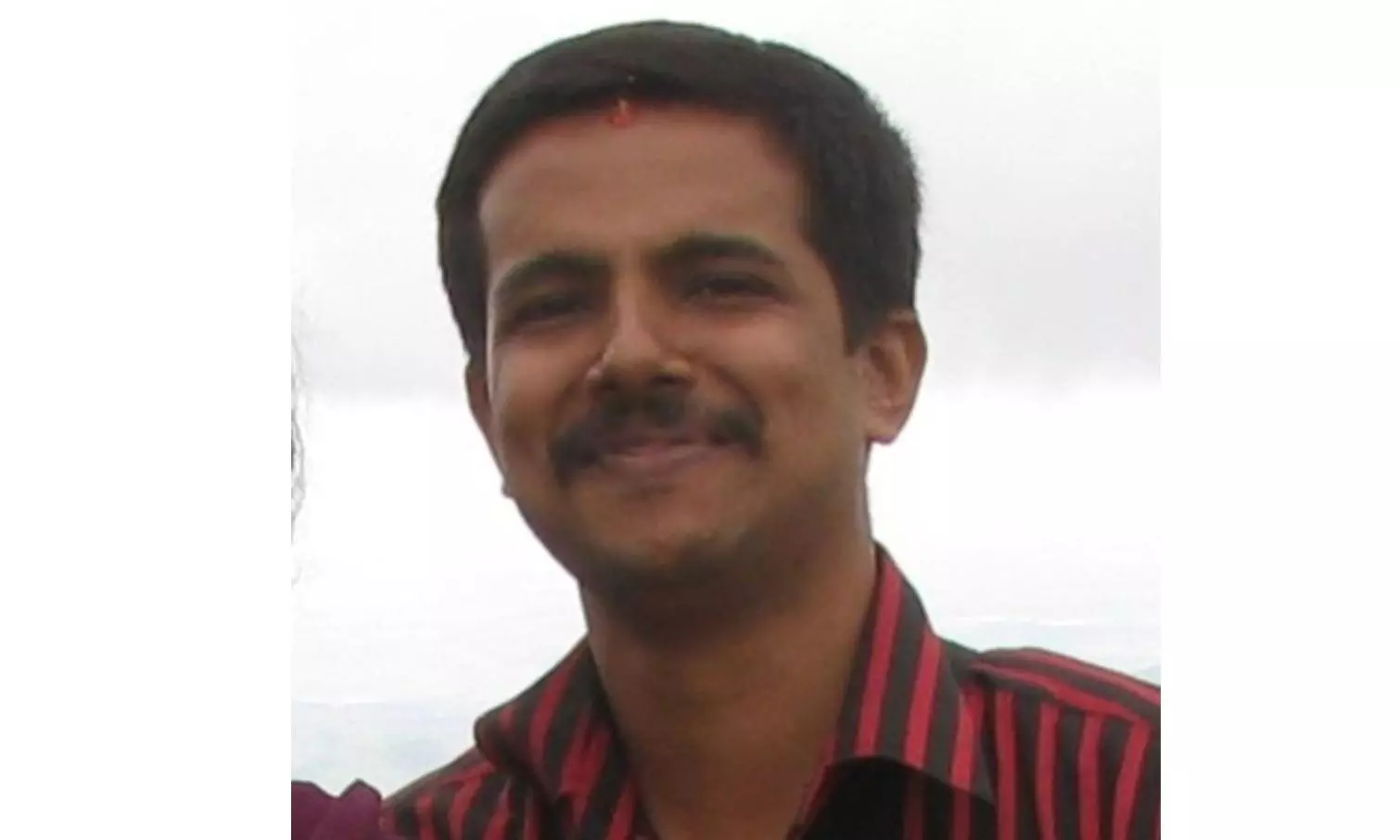Karnataka: Rare Garudanandi Pillar Unearthed in Bilasunur

A rare and intricately carved Garudanandi pillar has been discovered in Bilasunur village, Karnataka (Photo by arrangement)
Ballari: A rare and intricately carved Garudanandi pillar (Garudanandigambha) has been discovered during fieldwork in Bilasunur village, Harihar taluk, by Dr. Shejeshwara R., Director of the Karnataka State Department of Archaeology, Museums, and Heritage, Kamalapura-Hampi.
Made of schist stone, the pillar stands 333 cm tall and 66 cm wide. It features a west-facing Nandi sculpture at the top, paired with a south-facing Garuda depicted in a gesture of reverence. The structure also bears a 10-line inscription in Kannada script with Sanskrit verses on its northern side, now deciphered after meticulous cleaning.
The inscription begins with a hymn to Harihareshwara, the region’s presiding deity, and praises Lord Ganesha. It also references Vishnu’s Varaha avatar and the Seuna dynasty, specifically Kandhara (Sevuna Krishna), who ruled from CE 1247 to 1261. During his reign, the local administration of Harihar was overseen by chieftain Kadabhoopati.
Remarkably, the inscription records a donation of the villages of Harihar and Belachuru (modern Bilasunur) in CE 1249 (Saumya Samvatsara), although the recipient remains unidentified.
The Garudanandi pillar exemplifies the fusion of Shaivism and Vaishnavism through the combined emblems of Vishnu’s Garuda and Shiva’s Nandi. Similar pillars have been identified in villages along the Tungabhadra River, such as Guddahosalli and Kode, but the Bilasunur pillar is distinguished by its detailed inscription and unique features.
Dr. Shejeshwara credited Professor Tippesh, Dr. Ravikumar K. Navalgund, epigraphy experts Dr. Srinivas Padigar and Dr. Jagadish, and the residents of Bilasunur for their invaluable contributions to this discovery.
This finding adds a significant chapter to Karnataka's historical and cultural legacy, shedding light on the region's rich past.
Made of schist stone, the pillar stands 333 cm tall and 66 cm wide. It features a west-facing Nandi sculpture at the top, paired with a south-facing Garuda depicted in a gesture of reverence. The structure also bears a 10-line inscription in Kannada script with Sanskrit verses on its northern side, now deciphered after meticulous cleaning.
The inscription begins with a hymn to Harihareshwara, the region’s presiding deity, and praises Lord Ganesha. It also references Vishnu’s Varaha avatar and the Seuna dynasty, specifically Kandhara (Sevuna Krishna), who ruled from CE 1247 to 1261. During his reign, the local administration of Harihar was overseen by chieftain Kadabhoopati.
Remarkably, the inscription records a donation of the villages of Harihar and Belachuru (modern Bilasunur) in CE 1249 (Saumya Samvatsara), although the recipient remains unidentified.
The Garudanandi pillar exemplifies the fusion of Shaivism and Vaishnavism through the combined emblems of Vishnu’s Garuda and Shiva’s Nandi. Similar pillars have been identified in villages along the Tungabhadra River, such as Guddahosalli and Kode, but the Bilasunur pillar is distinguished by its detailed inscription and unique features.
Dr. Shejeshwara credited Professor Tippesh, Dr. Ravikumar K. Navalgund, epigraphy experts Dr. Srinivas Padigar and Dr. Jagadish, and the residents of Bilasunur for their invaluable contributions to this discovery.
This finding adds a significant chapter to Karnataka's historical and cultural legacy, shedding light on the region's rich past.
( Source : Deccan Chronicle )
Next Story

